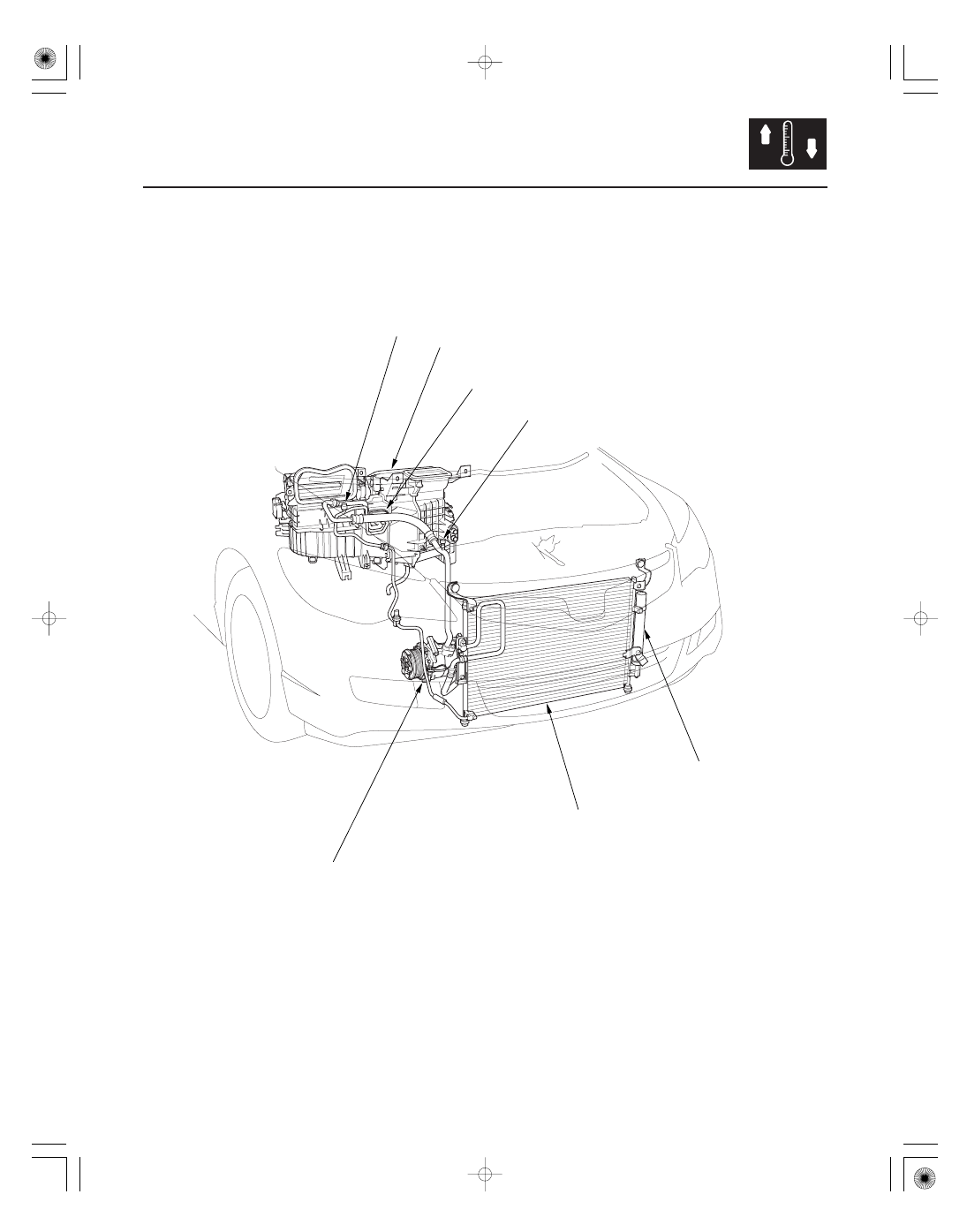Acura CSX. Manual - part 471

*01
SNR9A00G10500000000DAAT00
21-3
Climate Control
Component Location Index
SERVICE VALVE
(HIGH-PRESSURE SIDE)
A/C COMPRESSOR
RECEIVER/DRYER DESICCANT
A/C CONDENSER
SERVICE VALVE
(LOW-PRESSURE SIDE)
EXPANSION VALVE
EVAPORATOR CORE
(Located in the heater unit)
Replacement, page 21-83
Clutch Check, page 21-85
Clutch Overhaul, page 21-86
Thermal Protector Check, page 21-85
Thermal Protector Replacement, page 21-87
Relief Valve Replacement, page 21-87
Replacement, page 21-89
Replacement, page 21-88
Replacement, page 21-80
Replacement, page 21-78
08/08/21 14:40:48 61SNR030_210_0004